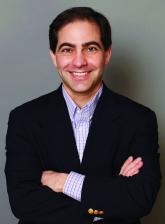News
Neurologists Lack Awareness of Steroid Toxicity
- Author:
- Kate Johnson
Over 85% of survey respondents indicated that a tool for systematically monitoring corticosteroid toxicity would be valuable.
News
Veterans Affairs Hailed as a ‘Bright Spot’ in ALS Care
- Author:
- Kate Johnson
Transdisciplinary collaboration is essential for maintaining an effective system.
News
Digital Tool May Help Neurologists Assess Steroid Toxicity
- Author:
- Kate Johnson
The study results “indicate that patients with MG who initiated steroids demonstrated evidence of steroid toxicity in as little as 90 days after...
News
Remote Assessments: A Win-Win for ALS Patients and Clinics?
- Author:
- Kate Johnson
Remote monitoring of patients with ALS is a feasible option for both maximizing quality of life and minimizing cost and disruption.
News
Sustained Control with Investigational Monoclonal Antibody for Myasthenia Gravis
- Author:
- Kate Johnson
The VIVACITY-MG3 trial is the first registrational study of a neonatal fragment crystallizable receptor blocker to show sustained efficacy through...
News
First-in-Class B-Cell Depleting Agent Promising for Myasthenia Gravis
- Author:
- Kate Johnson
Although inebilizumab is already FDA-approved for the treatment of neuromyelitis optica, it still faces approval and indication hurdles for MG.
News
Antidepressants Linked to Improved Verbal Memory
- Author:
- Kate Johnson
The clinical effect may be linked to changes in serotonin 4 (5-HT4) receptor levels in the brain.
News
Heightened Amygdala Activity Tied to Postpartum Depression
- Author:
- Kate Johnson
“Pregnant women with higher amygdala activity were less able to regulate their emotions successfully compared to those with less amygdala activity...
News

Neuromyelitis Optica: Historically Misdiagnosed — Now Demands Prompt Treatment
- Author:
- Kate Johnson
Rapid diagnosis and treatment of NMO “means potentially preventing future devastating neurologic inju......
News
Can Hormones Guide Sex-Specific Treatments for Alcohol Use Disorder?
- Author:
- Kate Johnson
“Sex hormones may modulate treatment response, potentially supporting sex-specific pharmacological intervention.”
News
Expert Calls for Research into GLP-1s for Mental Illness
- Author:
- Kate Johnson
Current research investigating GLP-1s in psychiatry and neurology is increasingly focused on neuroinflammation.
News
Psilocybin Bests SSRI for Major Depression in First Long-Term Comparison
- Author:
- Kate Johnson
“The study suggests that psilocybin therapy might be a more holistic treatment option for depression.”
News
Liposomal Irinotecan May Be Effective in Later Lines for Pancreatic Cancer
- Author:
- Kate Johnson
Real-world meta-analysis finds benefit of later-line liposomal irinotecan is not attenuated by prior conventional irinotecan.
News
Study Identifies Oral Antibiotics Linked to Severe Cutaneous Reactions
- Author:
- Kate Johnson
The results “underscore the importance of judicious prescribing, with preferential use of antibiotics associated with a lower risk when clinically...
News
Outcomes with CDK4/6 Inhibitors Vary in BC
- Author:
- Kate Johnson
A large Italian study found real-world differences in short-term outcomes among first line CDK4/6 inhibitors palbociclib, ribociclib and...
